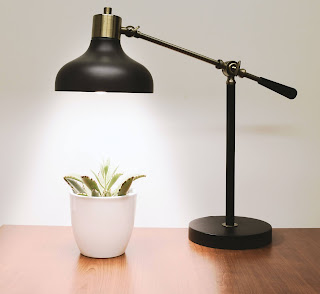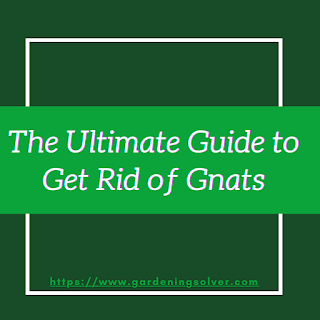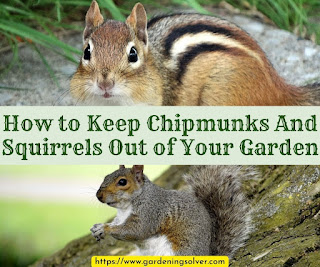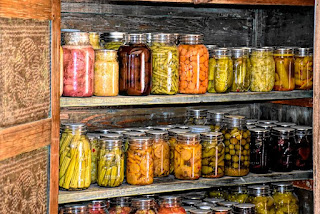How to Get Rid of Slugs and Snails in the Garden
- Get link
- X
- Other Apps
Slugs and snails are an important part of the ecosystem, but they can cause significant damage to plants if left uncontrolled. These slimy creatures feed on a wide range of plants including underground tubers, landscape plants, ornamental plants, seedlings, vegetables, and fruits that are close to the ground.
Symptoms of the damage caused by these pests include chewed leaves, and their damage may be easily mistaken for feeding by chewing insects like caterpillars. Luckily, you can tell if you have slug or snail damage by the presence of silvery mucous trails which these creatures secrete.
In this post, we've listed several methods you can use to get rid of slugs and snails. Continue reading to learn more.
Disclosure: This post contains affiliate links. We may receive commissions on purchases made from our chosen links with no extra cost to you. Learn more.
Use Sluggo Plus
When choosing products that deter snails and slugs, it's important to get something that won't have a negative effect on you and the environment. Sluggo Plus is one of low toxicity pesticides. It contains spinosad and iron phosphate which are naturally derived ingredients. Once a slug or snail consumes it, they stop eating and begin to die within a few days.
This product can be used around lawns, trees, flowers, and it is safe to use on edible plants. More importantly, it is also safe to use around pets as well as other wildlife. Sluggo Plus not only gets rid of snails and slugs, but it is also effective in controlling other pests such as cutworms, earwig, pillbugs, etc.
Use Garden Safe Slug & Snail Bait
Garden Safe Slug & Snail Bait is also a great product that helps to get rid of slugs and snails. It contains naturally derived ingredients, making it safe to use around pets. But once snails and slugs ingest iron phosphate which is the primary ingredient of this product, they stop eating and die within just a few days.
This product as well as the above -mentioned Sluggo Plus are OMRI-listed (Organic Materials Review Institute), which means they're certified for organic use. Therefore, instead of using harsh pesticides that can hurt your plants and contaminate the environment, opt for these organic products to keep your plants free from slugs and snails.
Use Copper Wire or Tape
Copper wire or tape is an effective trick to discourage snails and slugs around plants. When copper comes into contact with snails or slugs, it gives them unpleasant shock. As a result, they'll avoid the area where it's placed since they get shocked whenever they try to cross it.
Copper wire mesh or tape can be applied around plant stems, your garden edges, flowerpots, containers, tree trunks, etc. The best thing about this technique is that it's easy to use and you won't spend time trying to figure out how to apply it. Moreover, copper is lightweight, so it won't damage plants. You can get copper tape and wire mesh online or at gardening centers.
Create a Abrasive Barrier
Surround your garden with an abrasive barrier in order to reduce snails and slugs activity. This will make it difficult for these soft-bodied pests to move over prickly barriers to reach the plants. Use diatomaceous earth, gravel, or broken eggshells to create that rough barrier.
Option like diatomaceous earth does not only deter snails but can also be used to get rid of other soft-bodied pests such as aphids. When opting for it, make sure to get food-grade diatomaceous earth because industrial and pool grade powder is toxic.
Use the Catch and Release Method
Catching and releasing these pests can be an effective way to eliminate them from your home and garden. Most common way of trapping snails and slugs is by using a wooden board with runners. The runners will help to lift the board off the ground so that the snails or slugs can crawl underneath.
To catch them, water small portions in your yard in the evening, especially in areas where you notice a lot of snails and slugs. Then place the boards on top of damp soil, and these pests will congregate underside the board. In the morning, lift up the board and scrape off accumulated snails into a container. Release them into the wild (if it's legal to do so in your area), or you will figure out a suitable place to release them.
To Wrap Up
Despite moving slowly and being tiny, slugs and snails can cause severe damage to your plants within a single night. So you must not let all your hard work go in vain because of these pests. With aforementioned methods, you can stop them from snacking on your plants.
You can use a combination of these methods for best results. Additionally, try to grow slug-resistant plants such as hydrangea, geranium, ferns, iris, lavender, rose, tulip, etc. Also make sure to cut the population of these pests by removing rubbish, refuse, or debris around your home since these creatures often seek shelter on those sites, and that's where they lay eggs.
Frequently Asked Questions
Does salt stops slugs and snails
Yes, slugs and snails die whenever they get exposed to the salt. This is because they have a soft body and when table salt draws the water out of their bodies they get dehydrated. However, I don't recommend you to use salt when you find these pests in your plants because salt can hurt your plants and also affect the soil balance.
Will Epsom salt deter slugs?
Epsom salt works to control snails and slugs. The abrasive texture of it irritates and scratches the soft body of these pests. Then they eventually die through dehydration. Even though Epsom salt kills snails and slugs through dehydration, it is totally different from table salt. It was termed salt due to its chemical structure.
Besides helping to keep away snails and slugs, Epsom salt has a wide range of benefits in the garden, from helping seeds to germinate, making plants grow healthier, etc. So you can use it to get rid of these pests instead of using table salt.
Where do slugs go in the daytime?
Slugs and snails are most active at night, then during daytime they hide in damp places since their bodies require moisture. They also stay in dark spots such as under stones, ground cover, and logs. But this doesn't mean you can't see them at all during the daytime. They can be seen during the day especially after a rainfall.
You Might Also Like
Best Potting Soil for Your Plants
- Get link
- X
- Other Apps







Comments
Post a Comment
Have something to say? Feel free to leave a comment.